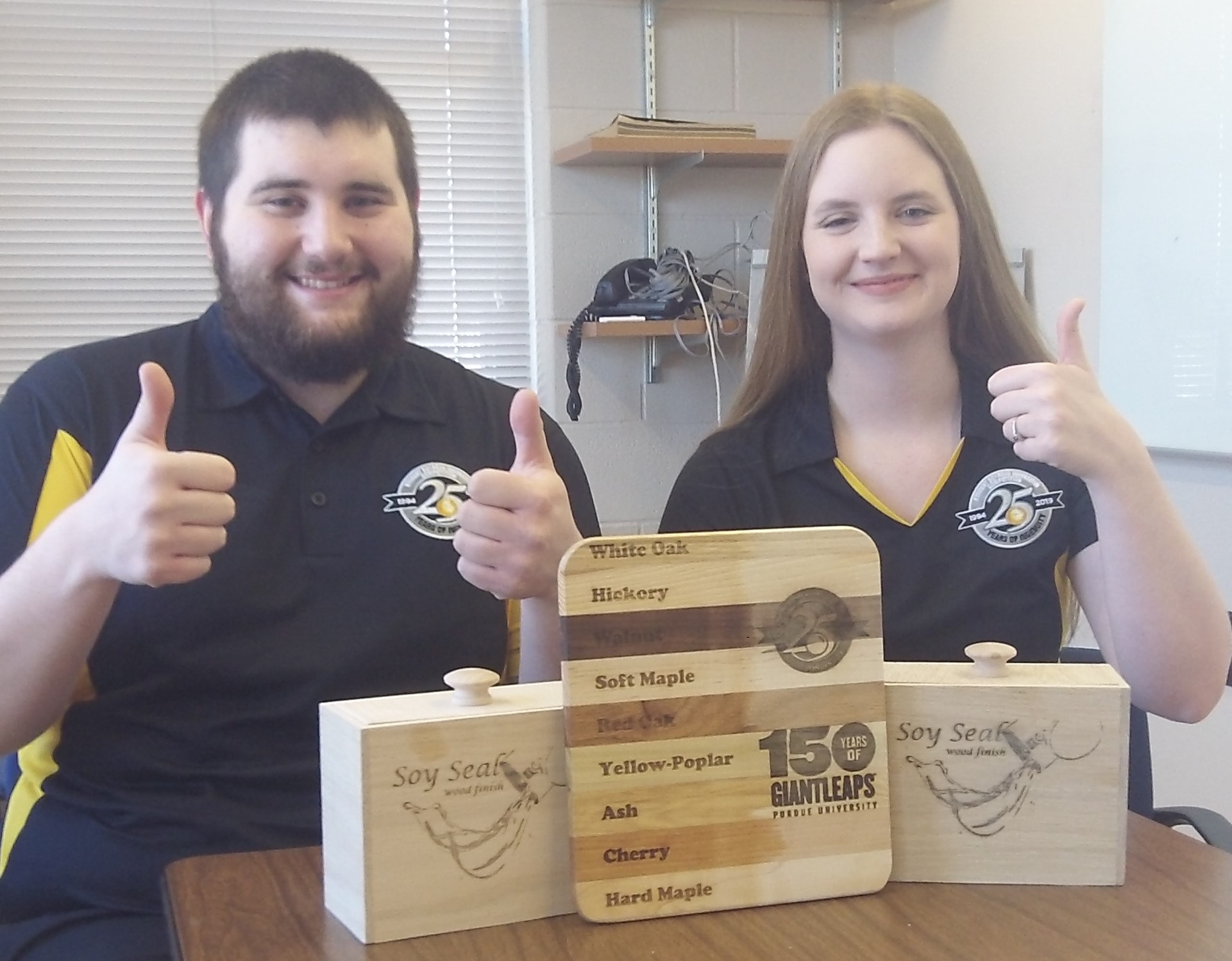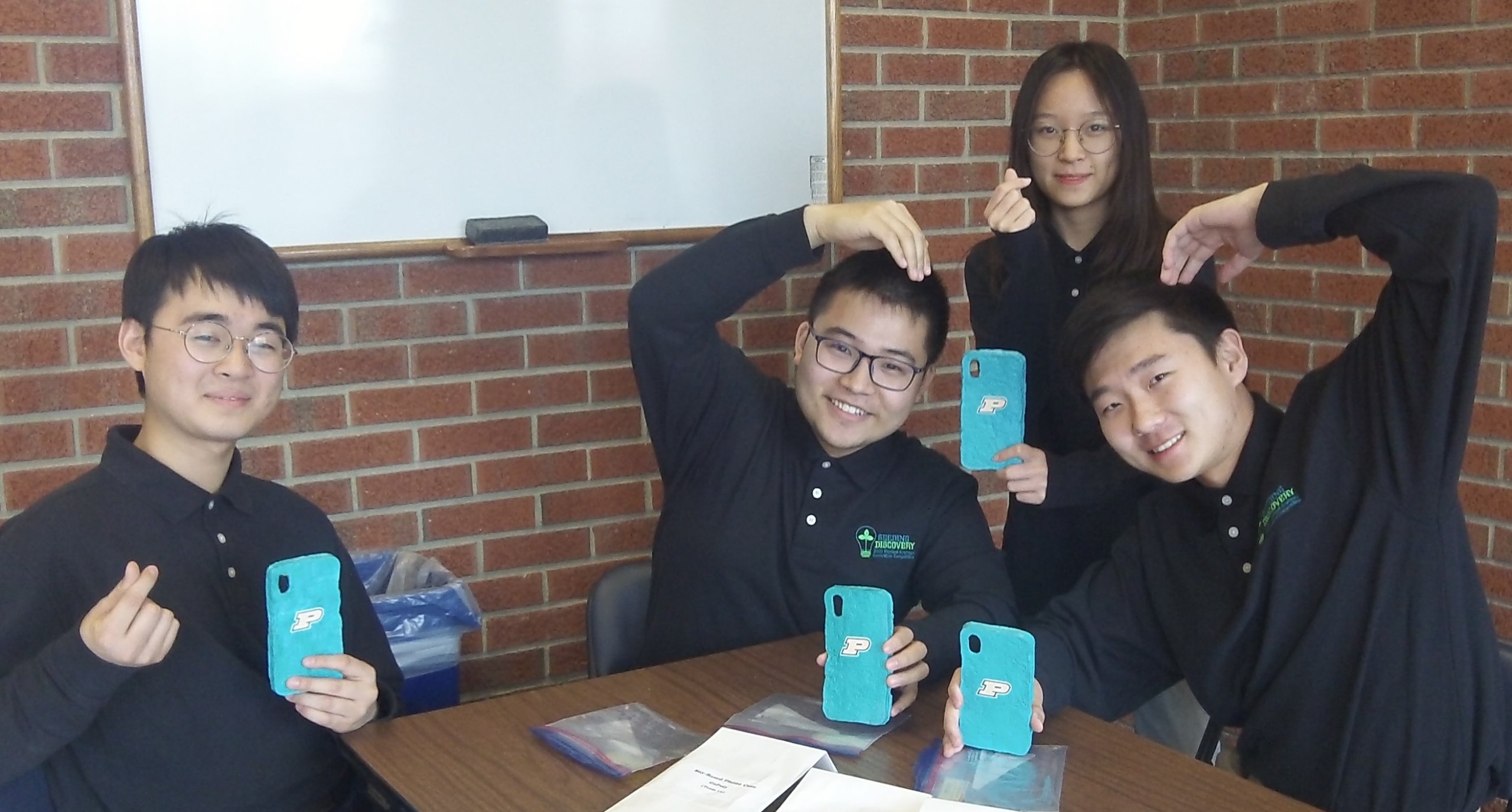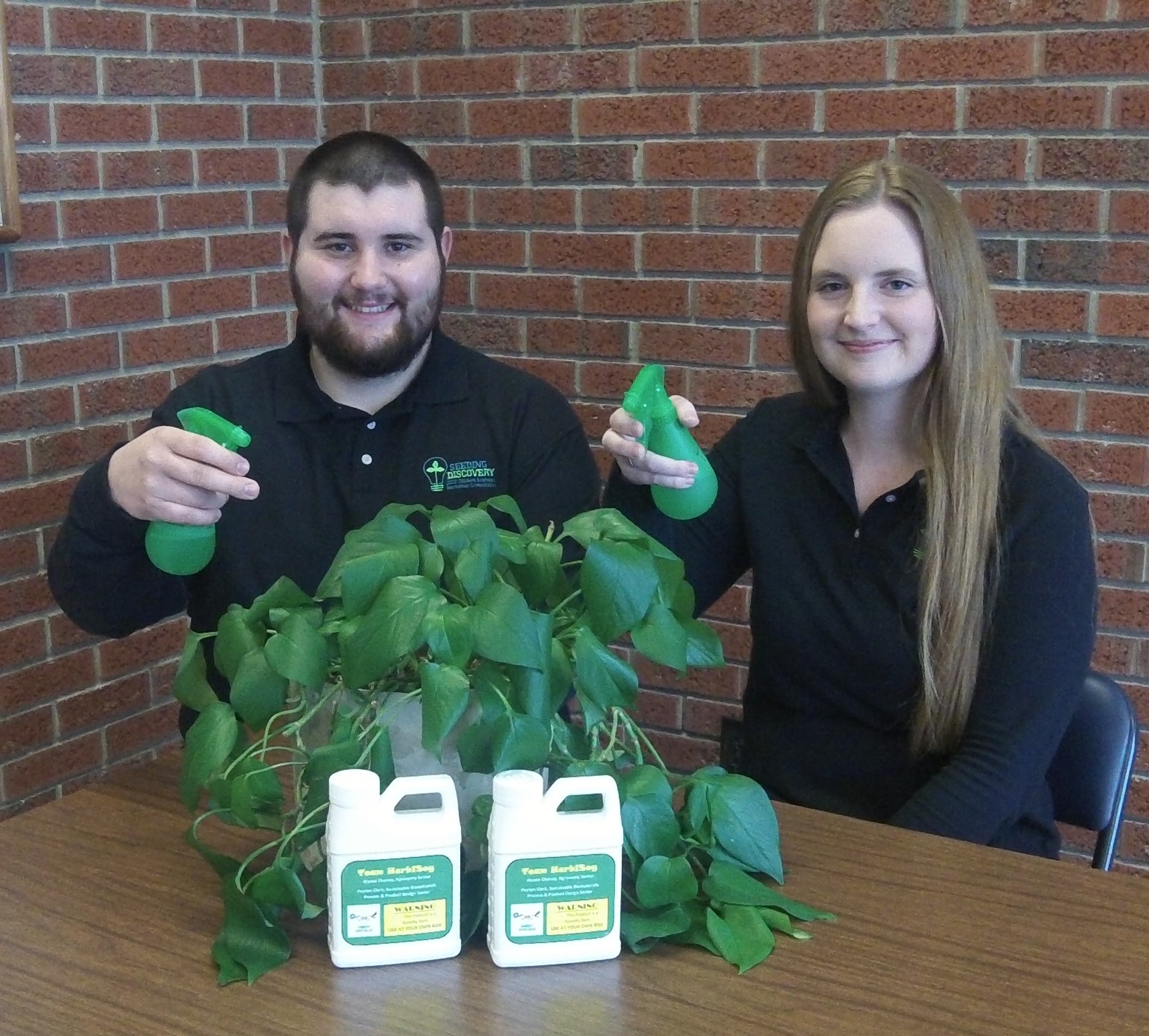Soy-based herbicide takes top honors
"Let’s do that again!” thought Alyson Chaney and Peyton Clark as they stood on stage holding a $10,000 check. On March 27, 2019, after a challenging eight-month competition hosted by the Indiana Soybean Alliance, the pair was already planning their next moves.
“The Purdue Student Soybean Innovation Competition gives Purdue students an excellent opportunity to develop a soy-based idea from conception to completion, complete with a finished, working prototype,” said Michelle Creech, Purdue Student Soybean Product Innovation Competition Program Manager.”
This year’s competition included students from agriculture, engineering, liberal arts, science, management and pharmacy.
Some joined hoping to replicate the success of past winners like Jocelyn Wong, whose invention of soybean crayons helped launch her career. Others, like Jingyuan Li and Shuyi Peng of Team GoPoly used the competition as the senior design project for their Agricultural and Biological Engineering (ABE) major.
This year’s champions, Chaney and Clark, returned hoping to gain additional experience, memories and seed money to support their future endeavors.

Chaney, a senior studying agronomy and Clark, a senior in forestry and natural resources, met when they were growing up in Clinton, Indiana.
Although both families planted soybeans, Chaney said the competition opened her eyes to the crop’s potential. “Soybeans were just something we planted every year. I didn’t realize how many things soybeans could be used for.”
Last year, the duo created Soy Seal, a food-safe, oil-based wood finish.
After exploring several possibilities this year, Chaney came up with the idea of creating soy-based herbicide.
“As an agronomy major, I’ve done internships each summer with ag retail locations, doing work with lots of chemicals and applications,” Chaney explained.
Chaney and Clark decided to focus on the concerns of homeowners, attempting to create an all-natural weed killer, safe for homes with pets and children.
“At the onset, as Alyson and Peyton presented their overall idea and protocol to me, it became obvious that they had put a lot of thought into this project,” Gerber recalled. “As I watched and interacted with them over the weeks, I noticed that they spent countless hours reading up on research articles that helped them fine-tune their experimental design, making key adjustments to their research protocol each time they conducted an additional experiment, continually informing me of the results they observed, and asking me great questions throughout the entirety of their project.”
The excitement carried throughout the year, with the team using every opportunity to develop their product. Over winter break, Chaney and Clark prepared weeds to test. Between classes, they texted each other about ways what they’d learned could relate to HerbiSoy.
“If we weren’t graduating, I’m sure we’d be back to do it again,” said Chaney.








